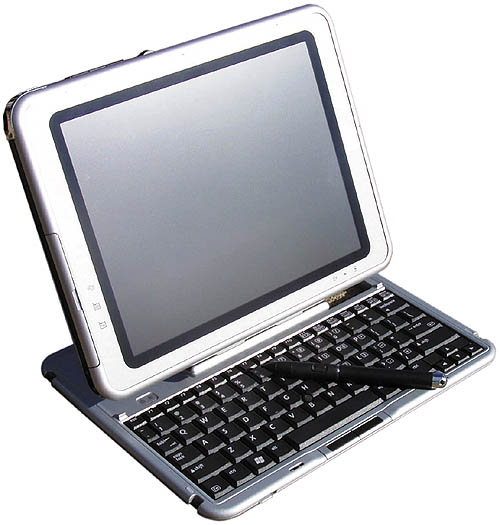Ubuntu version: feisty. Windows version: Windows XP.
Next, we enable to load the Ubuntu using Colinux (http://www.colinux.org) which lets us load up the ubuntu installation
while we are in windows. The docs for these are here: http://colinux.wikia.com/wiki/Dual_boot_system
There is a problem with passing COLINUX environment variable, because Ubuntu's new init system uses a package
"upstart" rather than "sysv". I made a small patch to make it work (its a hack).
--- process.c-original 2007-10-16 10:36:53.000000000 -0400
+++ process.c 2007-10-16 11:18:11.000000000 -0400
@@ -221,7 +221,7 @@
process_setup_environment (Job *job)
{
char **env;
- char *path, *term, *jobid;
+ char *path, *term, *jobid, *colinux;
nih_assert (job != NULL);
@@ -231,6 +231,10 @@
NIH_MUST (path = nih_strdup (NULL, getenv ("PATH")));
NIH_MUST (term = nih_strdup (NULL, getenv ("TERM")));
+ colinux = NULL;
+ if (colinux = getenv("COLINUX"))
+ colinux = nih_strdup (NULL, colinux);
+
if (clearenv () < jobid =" nih_sprintf">id));
if (setenv ("UPSTART_JOB_ID", jobid, TRUE) <>
Just apply it to process.c file in the upstart source, and rebuild the upstart deb. You can download my upstart.deb here, its good for Ubuntu feisty: http://archimedes.hypervolume.com/~boris/upstart
Following the colinux wiki howto, I create /etc/init.d/colinux script, added it to rc2.d, as S01colinux, so that it starts first,
#!/bin/sh
# colinux use either a set of coLinux-related configuration
# files, or their direct-boot counterparts
# also, touch file /var/local/colinux if we are in colinux mode
if [ $COLINUX ]; then
SUFFIX=colinux
for i in 0 1 2 3 4 5 6 7; do mknod /dev/cobd$i b 117 $i; done
else
SUFFIX=non-colinux
fi
for conf_file in "/etc/fstab" "/etc/network/interfaces" "/etc/resolv.conf" "/etc/asound.conf"; do
cp -f $conf_file-$SUFFIX $conf_file
done
if [ $COLINUX ]; then
touch /var/local/colinux
else
rm -f /var/local/colinux
fi
exit 0
These are the one-liners that I added at the top of each file that I disable in Colinux mode.
boris@freedom:/etc/init.d$ grep colinux *
acpid:test -f /var/local/colinux && exit 0
acpi-support:test -f /var/local/colinux && exit 0
apmd:test -f /var/local/colinux && exit 0
bluetooth:test -f /var/local/colinux && exit 0
gdm:test -f /var/local/colinux && exit 0
hotkey-setup:test -f /var/local/colinux && exit 0
nvidia-kernel:test -f /var/local/colinux && exit 0
pcmciautils:test -f /var/local/colinux && exit 0
powernowd:test -f /var/local/colinux && exit 0
vbesave:test -f /var/local/colinux && exit 0
Notice that colinux script installes copies of fstab, asound, and resolv.conf.
Here they are:
fstab-colinux:
/dev/cobd0 / ext3 defaults,errors=remount-ro 0 1
/dev/cobd1 none swap sw 0 0
cofs0 /mnt/data cofs defaults 0 0
My windows C: is NTFS, so I created D: as FAT32 which I share as a cofs0 device. (See cofs.txt in coLinux directory).
The fstab-non-colinux is the fstab you had from Ubuntu installation.
The reason to change asound.conf is to forward all sound over to a windows based sound daemon, called pulseaudio. You gonna need to install it on the windows end.
asound.conf-colinux:
---8<------
pcm.!default { type pulse }
ctl.!default { type pulse }
pcm.pulse { type pulse }
ctl.pulse { type pulse }
---->8----
The asound.conf-non-colinux is empty.
Before I show resolv.conf lets talk about Networking. Colinux creates a TAP device, which I use for linux-windows communication only. To communicate from colinux to the internet I use "Slirp" device. The reason is that this way if you setup VPN on windows to your work, colinux will be able to access it too, without any config. "Slirp" works good for internet, but too slow for local communication. That's why I use TAP, with the IP 10.0.0.1 on windows, and 10.0.0.2 on linux. Note that, "Slirp" issues
10.0.0.2.* subnet ips, so its a different subnet. Read this for more info: http://colinux.wikia.com/wiki/Network#Accessing_windows_based_VPN
Here's my resolv.conf-colinux,
boris@freedom:/etc/init.d$ cat /etc/resolv.conf-colinux
nameserver 10.0.2.3
nameserver 192.168.5.10
nameserver 192.168.5.12
The first nameserver is due to the Slirp device. The rest are nameservers of my company, after I VPN into it on windows side.
Okay, so that covers the basic colinux setup. Next comes the X configuration. Download Xming from its sourceforge page.
If you go to authors page the download link requires a donation of 10 euros. You can download Xming-fonts from authors page, though.
Install Xming, Xming fonts.
Download puttygen, pageant, putty, and plink. Setup public/private key according to putty documentation.
Start pageant, and add your key into it.
Add a shortcut to pageant to startup, and give command line arguments to pageant the path to your private key.
Verify that plink user@10.0.0.2 doesn't require a password to login, where 10.0.0.2 is the colinux ip.
Start Xlaunch, which is a program that comes with Xming. Select "fullscreen", Putty and fillin all the params.
For application that needs to be launched type the path for "stumpwm" on your colinux system. Xlaunch will create
a shortcut on your desktop to start the X/StumpWM.
To automate startup of colinux more, download 'clm' tool for colinux (http://colinux.wikia.com/wiki/Clm),
and add a service for your colinux. Then create a start_colinux.bat with (net start "colinux") which you can place on your desktop.
This way you will not have a colinux console open all the time. If you want to attach a console to a running colinux,
create a shortcut to colinux\clm.bat with command line arguments "open fltk" and place it on your desktop.
Add keyboard shortcuts to all your windows apps. That is found in the properties of the shortuct. I have,
- Ctrl-Alt-X : start X
- Ctrl-Alt-C : start command line (configure the font and dimennsions so it fills up the full screen)
- Ctrl-Art-R : show colinux console (open fltk stuff).
Todo: how to automate starting of the sound server.

